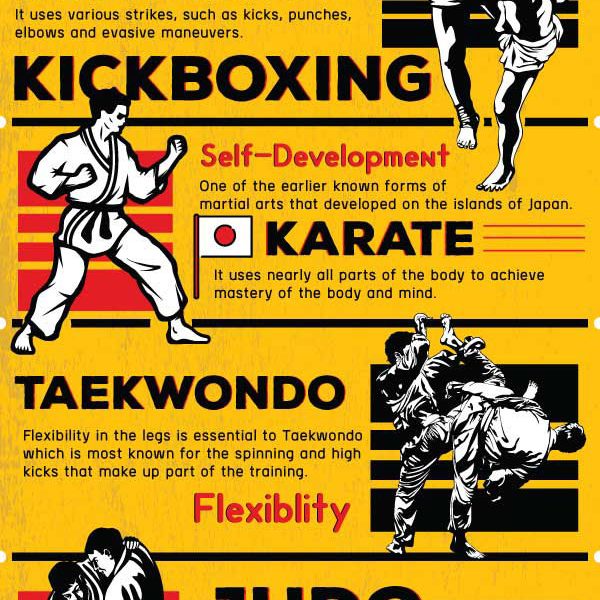In What Means Do Typical Martial Arts Focus On Discipline Contrasted To The Competitive Nature Of Contemporary Battle Sporting Activities? Uncover The Fundamental Differences That Can Impact Your Journey
In What Means Do Typical Martial Arts Focus On Discipline Contrasted To The Competitive Nature Of Contemporary Battle Sporting Activities? Uncover The Fundamental Differences That Can Impact Your Journey
Blog Article
Post Developed By-Sherman Hovgaard
When you think about martial arts, do you lean more towards the traditional techniques or the contemporary fight sporting activities? Each path offers unique advantages and experiences, formed by their ideologies and training methods. Typical martial arts highlight personal growth and discipline, while modern combat sports focus on competitors and efficiency. Recognizing these differences can direct you in choosing the best method for your trip. Yet exactly how do these distinctions manifest in training and approach?
The Philosophy and Background Behind Standard Martial arts
While many people link martial arts with physical combat, the philosophy and history behind standard martial arts run much deeper. You'll find that these techniques stress personal growth, self-control, and respect.
Originating from ancient methods, typical martial arts were commonly established for Self-Defense and spiritual growth. They personify principles such as balance, harmony, and self-discipline, leading experts beyond plain fighting skills.
As you train, you'll not just learn methods but additionally obtain insights into the culture and values that formed these arts. The rituals and traditions, usually given through generations, foster a sense of neighborhood and belonging.
The Competitive Nature of Modern Combat Sports
Modern battle sporting activities have transformed the landscape of martial arts into a highly competitive sector, where professional athletes face off in a test of ability, technique, and endurance.
You'll see that competitors are usually arranged with rigorous rules and guidelines, making sure fair game and safety and security. These events draw in big target markets, sustaining the enjoyment and strength of competitions.
Professional athletes train rigorously, not just for physical expertise yet also for mental sturdiness, knowing that every detail counts in the ring. https://www.forces.net/world/martial-arts-and-hand-hand-combat-worlds-militaries throughout competitions is palpable, as competitors press their restrictions to declare victory.
Followers value the athleticism and virtuosity included, making modern-day fight sports a thrilling phenomenon that remains to progress and captivate fanatics all over the world.
Training Approaches and Methods: A Relative Evaluation
The competitive atmosphere of modern-day combat sporting activities needs ingenious training methods that vary considerably from standard martial arts.
In modern training, you'll focus on specific techniques, sparring, and conditioning, often utilizing drills that simulate real battle circumstances. navigate to this site 'll see an emphasis on quantifiable efficiency and frequent competitors to assess your skills.
In contrast, conventional martial arts prioritize types, katas, and thoughtful teachings, typically stressing discipline and respect over competition.
Training is normally less intense and may entail repeated practice instead of real-time sparring.
While both methods build ability and fitness, modern-day combat sporting activities supply an extra dynamic and adaptable training environment, preparing you for instant challenges in the ring or cage.
Choose the course that straightens with your objectives and rate of interests.
Final thought
In picking in between traditional martial arts and modern-day fight sports, it actually boils down to what you value the majority of. If you're searching for individual development, discipline, and a sense of neighborhood, traditional arts might be your ideal fit. But if you thrive on competition and real-time obstacles, modern-day battle sports could be the means to go. Inevitably, both courses use unique benefits, so it's everything about aligning your training with your personal goals and rate of interests.
